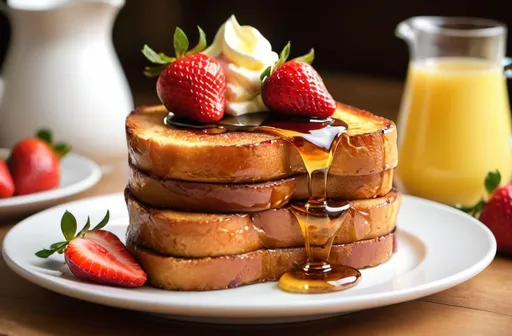Ah, French toast! That crispy-on-the-outside, soft-on-the-inside, golden-brown delight that instantly transforms an ordinary morning into a gourmet experience. Whether you know it as « eggy bread, » « pain perdu, » or just a childhood favorite, there’s no denying its magic.
In this guide, we’re diving deep into everything French toast—its history, the best ingredients, foolproof cooking techniques, common mistakes, and how to fix them. By the time you’re done reading, you’ll be a French toast master!
What is French Toast? A Classic Breakfast Delight
French toast is one of those dishes that feels fancy but is surprisingly simple. At its core, it’s just slices of bread soaked in an egg-based mixture, fried to golden perfection, and topped with all sorts of delicious things.
Fun Fact: Despite its name, French toast isn’t originally French! Variations of it date back to ancient Rome.
The History and Origin of French Toast
Would you believe that French toast has been around for over 1,500 years? The earliest record of this dish comes from the Roman Empire, where people soaked stale bread in a milk-and-egg mixture before frying it. The idea was simple: don’t waste food, make it delicious instead!
Fast forward to medieval Europe, and this dish became known as “pain perdu” in France, meaning « lost bread. » It was a way to rescue stale bread and turn it into something rich and satisfying.
Why is it Called « French » Toast?
So, why do we call it French toast? Some say it was named by American settlers who wanted to make it sound fancier. Others credit a man named Joseph French, an 18th-century New Yorker, for popularizing the name. Either way, one thing’s for sure—French toast is a dish the whole world loves!
The Essential Ingredients for Perfect French Toast
The beauty of French toast lies in its simplicity. You don’t need anything fancy, just a few pantry staples. But using the right ingredients makes all the difference!
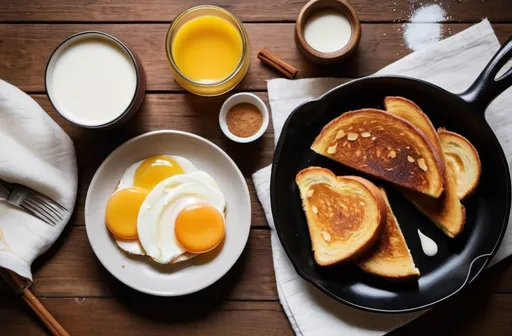
| Ingredient | Purpose |
|---|---|
| Bread | The foundation of your French toast. Brioche, challah, and Texas toast are the best choices. |
| Eggs | They create a rich and creamy texture, binding everything together. |
| Milk or Cream | For extra moisture and fluffiness. Whole milk, half-and-half, or plant-based alternatives work great. |
| Sweetener | Optional but adds depth. Sugar, honey, or maple syrup are good choices. |
| Vanilla & Spices | A dash of vanilla and cinnamon can take your French toast to the next level. |
Choosing the Best Bread for Texture and Flavor
Not all bread is created equal when it comes to French toast. You want a bread that’s slightly dry but still soft, so it absorbs the egg mixture without turning mushy.
- Brioche: Buttery, rich, and slightly sweet—ideal for indulgent French toast.
- Challah: Eggy and soft, it soaks up just the right amount of custard.
- Texas Toast: Thick, fluffy, and perfect for soaking without falling apart.
- Sourdough: If you like a bit of tang, this adds a unique twist.
Pro Tip: Avoid pre-sliced sandwich bread—it’s too thin and tends to fall apart!
The Perfect Egg Mixture: Ratios and Additions
The egg mixture is what gives French toast its signature texture—crispy outside, custardy inside. Here’s a foolproof ratio:
| Ingredient | Quantity (for 4 slices) |
|---|---|
| Eggs | 2 large |
| Milk or Cream | 1/2 cup |
| Vanilla Extract | 1 tsp |
| Cinnamon | 1/2 tsp |
| Sugar (optional) | 1 tbsp |
Whisk everything together until smooth, making sure there are no egg streaks. You want an even blend to coat your bread perfectly!
Dairy vs. Dairy-Free Alternatives: What Works Best?
If you’re lactose-intolerant or just want a non-dairy version, don’t worry! You can swap out milk with:
- Almond milk: Light and slightly nutty.
- Oat milk: Creamy and rich—closest to dairy.
- Coconut milk: Adds a tropical touch.
Fun Fact: Some people use orange juice instead of milk for a citrusy twist!
Step-by-Step Guide to Making Classic French Toast
Ready to make the best French toast of your life? Follow these simple steps, and you’ll be enjoying a delicious, golden-brown breakfast in no time!
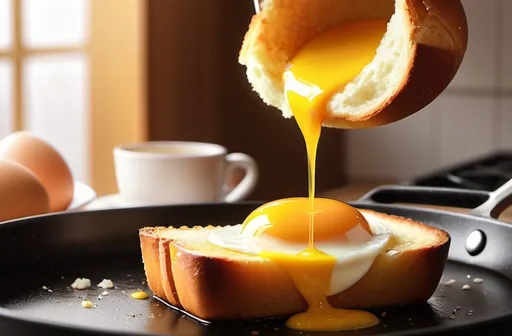
Prepping Your Ingredients for the Best Results
Before you start cooking, get everything ready. Having your ingredients measured and your tools set up will make the process smooth and stress-free.
| What You Need | Why It’s Important |
|---|---|
| Stale Bread | Fresh bread gets too soggy. Let it sit out for a few hours, or toast it lightly before soaking. |
| Egg Mixture | Whisk well to avoid uneven soaking and clumps. |
| Butter or Oil | For frying to crispy, golden perfection. |
| Non-Stick Pan or Griddle | Ensures even cooking without burning. |
Cooking Methods: Stovetop vs. Oven vs. Air Fryer
French toast can be cooked in multiple ways, depending on what you have available and how crispy you like it.
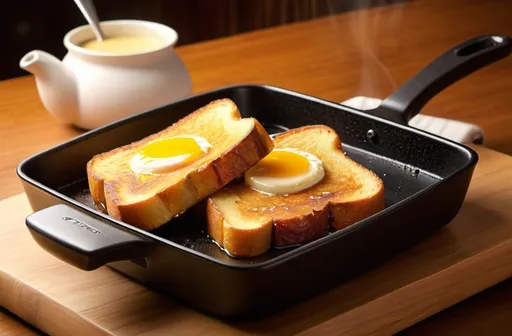
- Stovetop (Traditional Method): Cook on medium heat in a buttered pan for about 3 minutes per side. Flip when golden brown.
- Oven-Baked: Place soaked bread on a lined baking sheet and bake at 375°F (190°C) for about 15 minutes, flipping halfway through.
- Air Fryer (Crispiest Option): Cook at 375°F (190°C) for 8-10 minutes, flipping once. This gives the most crunch!
Pro Tip: If you’re cooking for a crowd, bake multiple slices at once in the oven to keep them warm and crispy!
Common Mistakes to Avoid for a Perfect Texture
Even the best cooks sometimes make mistakes. Here are the biggest French toast pitfalls and how to fix them:
| Mistake | Solution |
|---|---|
| Soggy French Toast | Use thicker bread, let it dry out, and don’t soak it too long in the egg mixture. |
| Eggy Taste | Add more milk and a bit of vanilla extract to balance flavors. |
| Burns Too Fast | Cook on medium heat, and don’t skimp on butter. |
| Not Crispy Enough | Use a hot pan and let it brown before flipping. |
Popular French Toast Variations to Try
Why settle for just the classic version? French toast is incredibly versatile, and you can switch things up in endless ways.
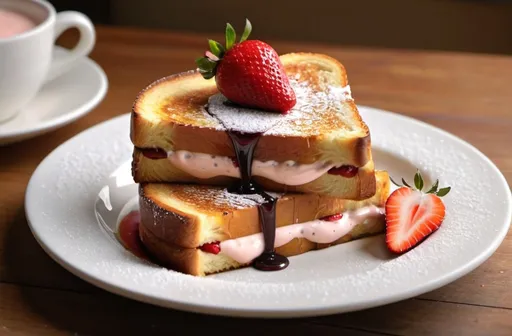
Stuffed French Toast: Sweet and Savory Fillings
Imagine biting into warm, creamy filling inside your French toast—it’s a game-changer! Here are some delicious stuffing ideas:
- Sweet: Cream cheese & berries, Nutella & banana, peanut butter & honey.
- Savory: Ham & cheese, scrambled eggs & bacon, avocado & feta.
Vegan and Gluten-Free French Toast Alternatives
Don’t eat eggs or dairy? No problem! You can still enjoy French toast with these swaps:
- Egg Substitute: Mashed banana, ground flaxseed with water, or cornstarch mixed with milk.
- Milk Substitute: Almond, oat, or coconut milk.
- Gluten-Free Bread: Look for thick-cut gluten-free loaves for the best texture.
Did You Know? You can make a protein-packed version by adding a scoop of protein powder to your egg mixture!
French Toast Toppings: Enhancing the Flavor
Sure, syrup is great, but why stop there? Get creative with toppings to take your French toast to the next level.
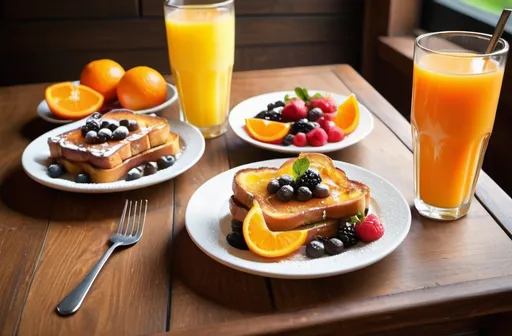
Classic Toppings: Maple Syrup, Butter, and Powdered Sugar
The OG toppings never disappoint. A drizzle of warm maple syrup, a pat of butter melting into the toast, and a dusting of powdered sugar? Perfection.
Gourmet Additions: Fresh Fruits, Nuts, and Chocolate Drizzles
Want to make it Instagram-worthy? Try these gourmet options:
- Fruits: Strawberries, blueberries, bananas, or caramelized apples.
- Nuts: Toasted almonds, pecans, or crushed pistachios.
- Extras: Chocolate sauce, caramel drizzle, or even crushed cookies.
Pro Tip: If you want extra crunch, add granola on top!
The Most Common French Toast Problems and How to Fix Them
Even the most seasoned cooks run into issues with French toast. Let’s tackle the most common problems and how to fix them!

Why is My French Toast Soggy?
Soggy French toast is the most common problem, and it’s usually caused by soaking the bread for too long or using bread that’s too thin. Here’s how to fix it:
- Use thicker, slightly stale bread to absorb the mixture properly.
- Don’t over-soak—dip the bread for about 10 seconds per side.
- Make sure your pan is hot enough before cooking.
Why is My French Toast Too Dry?
Dry French toast happens when there’s not enough liquid or fat in the batter. Try this:
- Add a little more milk or cream for a richer texture.
- Use butter instead of oil when cooking—it helps retain moisture.
- Cook on medium heat to prevent drying out.
How to Get the Perfect Golden Brown Crust
That beautiful golden brown crust comes from the right balance of heat, butter, and cooking time. Here’s what to do:
- Use medium heat—too hot will burn the outside before the inside cooks.
- Melt butter evenly in the pan before adding the bread.
- Don’t press down on the toast while cooking—it should naturally crisp up.
Quick Fix: If your French toast is too pale, add a pinch of sugar to the batter. It helps caramelize the crust for that golden-brown look!
Storing and Reheating French Toast: Best Practices
Got leftovers? French toast actually stores and reheats well if you do it right.
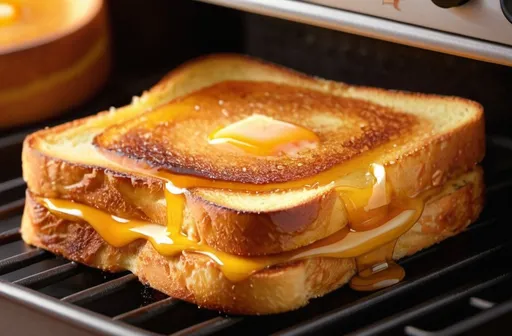
How to Store Leftover French Toast Properly
To keep it fresh, follow these steps:
- Let the toast cool completely before storing.
- Place slices in an airtight container or wrap them in foil.
- Refrigerate for up to 3 days or freeze for up to 2 months.
Reheating Methods: Keeping It Crispy and Delicious
The key to reheating French toast is avoiding sogginess. Here’s how:
| Method | Instructions |
|---|---|
| Oven | Preheat to 350°F (175°C), place on a baking sheet, and heat for 5-10 minutes. |
| Air Fryer | Set to 375°F (190°C) and heat for 3-5 minutes for extra crispiness. |
| Toaster | Quick and easy—just pop it in like regular toast! |
| Microwave | Only use this if you’re in a hurry! Heat for 30-40 seconds but expect it to be softer. |
Pro Tip: If reheating from frozen, let the toast thaw slightly before reheating for even warming.
Fun Facts About French Toast You Didn’t Know
Think you know everything about French toast? Here are some surprising facts:
- French toast isn’t actually French! It existed long before France became a country.
- It was originally a dish for the poor. People made it to use up old bread.
- In Hong Kong, they deep-fry it. Their version is stuffed with peanut butter and drenched in syrup.
- The Guinness World Record for the largest serving of French toast was set in 2014—2,636 slices!
Conclusion: Mastering the Art of French Toast at Home
By now, you’ve learned everything there is to know about French toast—from its rich history to mastering the perfect recipe. Whether you like it classic, stuffed, or gourmet-style, the key is using the right bread, the perfect egg mixture, and a solid cooking method.
So, what are you waiting for? Grab some bread, crack some eggs, and start making the best French toast ever!
Final Tip: Experiment with flavors and toppings—French toast is a blank canvas for deliciousness!

